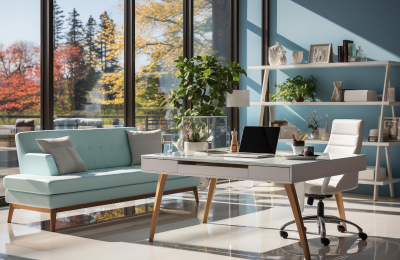
The Rise of Biophilic Designs: A Breath of Fresh Nature in Interior Design
Interior design is a field of continual change, and one of the most impactful trends we’ve seen recently is the rise of biophilic designs. This approach marries aesthetics with an innate human connection to nature, creating spaces that are not only visually appealing but also promote health, well-being, and productivity. Let’s delve into the history of biophilic design, understand its benefits, and why it’s becoming a cornerstone in modern interior design.
The History of Biophilic Design
Biophilic design originates from the idea of ‘biophilia,’ a term popularized by biologist Edward O. Wilson in 1984. Wilson proposed that humans have an instinctive bond with nature and other life forms. He argued that this connection profoundly influences our health, well-being, and personal development.
In interior design, biophilia translates into creating spaces that incorporate natural elements and mimic natural environments. While the concept has been around for several decades, it has gained significant traction recently as designers and architects recognize its potential to transform spaces and improve well-being.
Biophilic Design and its Benefits
There are many advantages to bringing biophilic design principles into our living and working spaces. Studies have revealed that exposure to natural elements can reduce stress, enhance creativity, improve mood, and boost overall well-being.
Moreover, biophilic design can also have tangible physical health benefits. For example, natural light can help regulate sleep patterns and increase vitamin D levels. Including indoor plants in an interior space can boost air quality by filtering out harmful toxins.
Biophilic Design in the Workplace
In the world of office design, biophilic elements are becoming increasingly important. As companies recognize the impact of the workplace environment on employee productivity and satisfaction, many are turning to biophilic design to create healthier, more inspiring spaces.
Biophilic design in offices can take many forms. It could be as simple as incorporating indoor plants or using natural materials including wood and stone. More ambitious designs include living green walls, water features, or large-scale installations that mimic natural landscapes.
The benefits for employees are significant. Biophilic design elements can help reduce stress, boost creativity, and improve focus. In an era where employee well-being is a top priority for many businesses, biophilic design presents a powerful and effective method for enhancing the workplace experience.
The Future of Biophilic Design
As we look to the future, it’s clear that biophilic design will continue to shape our built environments. As more research emerges about the profound impact of nature on our well-being, we can expect to see even greater integration of biophilic principles into interior design.
In conclusion, the rise of biophilic design represents a fundamental shift in how we think about our spaces. By bringing the outdoors in, we can imagine environments that are not only beautiful but also promote health, well-being, and productivity.